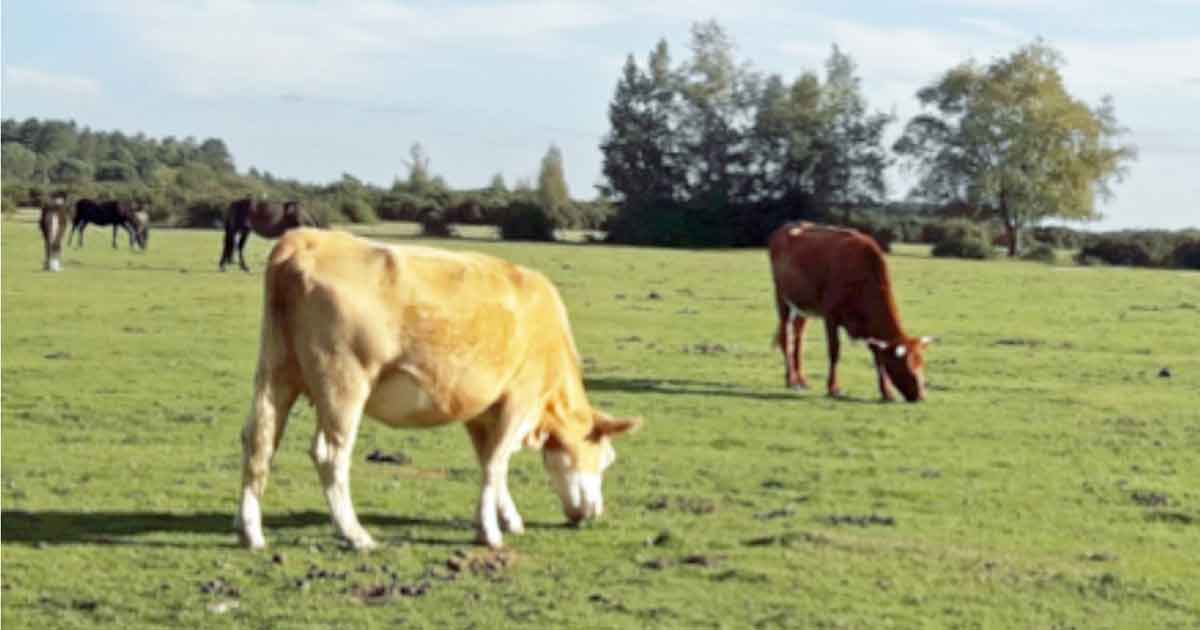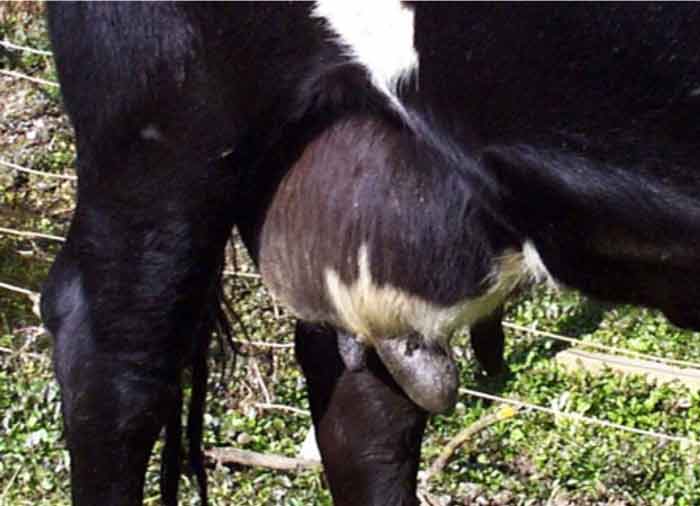The summer of 2018 was one of the hottest on record, with a UK average temperature of 15.8°C – 1.4°C above the 1981-2010 average – arguably creating an optimum environment for summer mastitis transmission (Met Office, 2018; Figure 1).
Summer mastitis can be described as an acute, suppurative bacterial infection of the non-lactating udder, with varying degrees of toxaemia. Infection can be of dry cows, heifers, beef cows and even male animals, where the teat and/or quarter swells rapidly, and progresses to become hard and painful (Chirico et al, 1997).
As well as clinical signs associated with the udder, affected cows may be lethargic and pyrexic – and, if untreated (or in particularly severe cases) may lead to death due to endotoxaemia. Of herds that are affected – which is highly influenced by location – the prevalence is estimated to be around 2% of cows (Berry and Booth, 1999).

Causes
It is accepted summer mastitis has a complex bacterial aetiology most commonly involving Trueperella pyogenes, Peptostreptococcus indolicus, Fusobacterium necrophorum and Streptococcus dysgalactiae (Madsen et al, 1990).
In the main, the causal bacteria are believed to be spread by flies; Hydrotaea irritans are the flies most strongly implicated in the carriage and transmission of these pathogens (Bramley et al, 1985; Overgaard Nielsen et al, 1987). Flies are often attracted to damaged tissue, with lesions on the teat orifice proven to contribute as a predisposing factor in the development of summer mastitis (Chirico et al, 1997).
H irritans flies are most active mid-July to August, with a peak in activity in the middle of the day (Berlyn, 1978). However, fly numbers appear to have surged over the summer of 2018 due to the rising temperatures, which has allowed faster egg to adult development and increased breeding (Dadour et al, 2001; Berlyn, 1978).
This may have elongated the activity season of nuisance flies, leaving cattle at risk for an extended period from summer mastitis.
Treatment is often unsuccessful in saving the udder tissue and functional use of the quarter is often lost due to scar tissue. In experimental inoculation of summer mastitis, 60% of the heifers failed to produce milk post-calving from the infected quarters (Hirvonen et al, 1996). Blind teats found post-calving – particularly in heifers – were often attributed to mild summer mastitis infection.
As the causal pathogens are contagious, and present at the same time as the proposed vectors, it is important animals identified with summer mastitis should be separated from the herd, and the group should be monitored closely for signs of transmission and further infection.
Treating infected animals can be challenging as, although T pyogenes is sensitive to penicillin and related antibiotics, penetration of the purulent material with any antibiotic in a non-lactating udder can be difficult. It is important to frequently strip the quarter, with care as these animals are often in considerable pain, and to discard all collected material as a potential source of infection (Figure 2).

Treatment and prevention
It is not unusual for cases of summer mastitis to progress to systemic illness. For systemically sick animals, treatment should be aimed at reducing the toxic effects of the infection by administering NSAIDs, systemic antibiotics and supportive therapy, such as oral or IV fluids.
Antibiotics should be penicillin-based, and continued for a suitable duration, although it is worth bearing in mind bacteriological cure may be complete prior to return to normal secretions, and udder swelling can persist for many months.
Insecticides should be considered for vulnerable groups and introduced early on in the season for the best results; waiting until flies are present often leads to poorer success. Furthermore, starting ectoparasite control early helps prevent fly population build-up over a season by reducing the number of breeding flies early on.
Insecticides will work for a varied duration, depending on the number of insects exposed to the product applied. In a summer such as 2018, with early and prolonged fly numbers, fly tags may have to be changed more frequently and pour-ons applied more regularly, although as this is off licence use, care should be taken to consider withdrawal periods.
As with the increasing awareness of potential antimicrobial resistance in the veterinary fields, antiparasiticide resistance may become more important – for example, cases of deltamethrin resistance have been reported in nuisance flies in cattle (VMD, 2018).
Frequent and repeated use of ectoparasiticides of the same class should be avoided to prevent resistance, as well as sound principles or responsible use, including accurate dosing. Avoid using problem pastures in summer months – for example, those with tree cover or open water – and seek exposed, windy areas. Such precautions will also help with the prevention of new forest eye cases.
As summer mastitis is likely to account for less than 25% of all clinical mastitis seen in heifers, control measures should also include those taken to prevent mastitis being acquired in the dry period, such as minimising teat end damage, increased farm hygiene and consideration of using internal teat sealants in pre-calving heifers (Bradley et al, 2006; Jonsson et al 1991; Waage et al, 1999; Gilbert, 2014).
The use of internal teat sealants in dry cows and pre-partum heifers should be discussed with clients aiming to reduce infections in the non-lactating udder. Clients’ techniques of teat sealant application should be observed for aseptic application to minimise potentially catastrophic postinfusion mastitis.
For lactating animals, selective dry cow antibiotic therapy can offer protection against summer mastitis pathogens, as well as environmental pathogens more commonly acquired in the dry period (Bradley et al, 2006).
Conclusion
Summer mastitis continues to affect many dairy and beef cattle. Its control relies heavily on environmental measures, as well as ectoparasite control.
